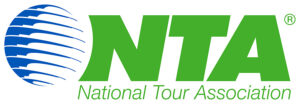Get all your money, cash, and cards sorted before you fly
An important part of any trip preparation is planning your budget. Here are some of the key things to think about to ensure you don’t run into any issues with money while on tour:
- Getting started
The Euro is used in most tour destinations in Europe.
It is recommended to change from USD to Euros to have enough the first day and then use the ATM from that point on.
If possible, avoid changing USD to Euros at exchange service points as they charge an extra fee (less favorable conversion rate).
- Optional excursions
Many trips offer a limited number of optional excursions or field trips. You pay for them before you leave, so they don’t need to be a part of your out-of-pocket budget on the trip. However, keep in mind that your Tour Manager may have ideas for extra excursions during your trip so you should also allow a little extra in your budget.
- Budgeting – How much will you need?
Spending money depends on personal habits and how long you’ll be abroad, but a good rule of thumb is $500 per week. This covers lunches, snacks, soft drinks, postage, souvenirs, free-time activities, optional excursions, and local transportation during free time.
- Tipping – Tour Manager and Drivers
It is recommended that you tip your full-time Tour Manager, bus drivers and local guides if you feel you have received good service. If their performance is outstanding, it is customary to tip in the range of $7 per person per day for the Tour Manager, $4 per person per day for the full time driver and $3 per person for your local guides. For ease of organization while on tour, your Group Leader may choose to organize the tips and collect them before your tour commences. Gratuities are at your own discretion at all times. If you wish to discuss tipping at any point either before or during your tour, your Group Leader will be able to answer any further questions that you may have.
- Credit & debit cards
You may obtain cash with your credit card or local bankcard at ATM machines. ATMs generally give a wholesale exchange rate, as much as 5% better than banks. Most big department stores and restaurants in major cities will take US credit cards, and these cards give you the best exchange rate.
Be sure to memorize your 4-digit personal identification number (PIN) to use your bankcard. Plus, check with your bank or credit card issuer to make sure your card is compatible with international ATMs.
If you don’t already have a PIN number for your credit card, you’ll have to call to get one. If a logo for PLUS or CIRRUS is on the back of your credit card or bankcard, you can probably use the card for cash at ATMs. These are the major money networks overseas. Call either PLUS (1-800-843-7587) or CIRRUS (1-800-424-7787) for ATM locations around the world.
- Foreign currencies
The Euro, the single currency of the European Monetary Union, began circulation on January 1, 2002. The Euro has replaced the national currencies of Austria, Belgium, Cyprus, Estonia, Finland, France, Germany, Greece, Ireland, Italy, Latvia, Lithuania, Luxembourg, Malta, the Netherlands, Portugal, Slovakia, Slovenia, and Spain. Within the United Kingdom, British Pounds are used. Local currencies also apply in Scandinavia (except Finland) and in Czech Republic (Prague).
- Coins don’t exchange
Foreign countries generally don’t exchange coins (either US or foreign); only banknotes are convertible. Leftover foreign coins in your pocket are good souvenirs for family and friends or can often be donated to charity bins in airport departure lounges.
- Changing back into USD
The rate going back to USD will not be as favorable as going into foreign currency, so try to avoid having large amounts of foreign cash left over.
- Keeping safe
Your common sense will take you a long way. Never leave money in your hotel room. Check your money, passport and other valuables in a hotel safe when available. Use a money belt or neck pouch for carrying money. Strap purses and cameras diagonally across, not over your shoulder, and preferably under your clothing. It is a good idea to leave expensive cameras, fancy sound equipment and jewelry at home. The maximum benefit payable for lost electronic/photo equipment according to your insurance coverage may not be more than $200-300. In the event that valuables are lost, you must have a police report to be covered by your insurance. The best advice is: “If you can’t bear to lose it, don’t bring it.”



